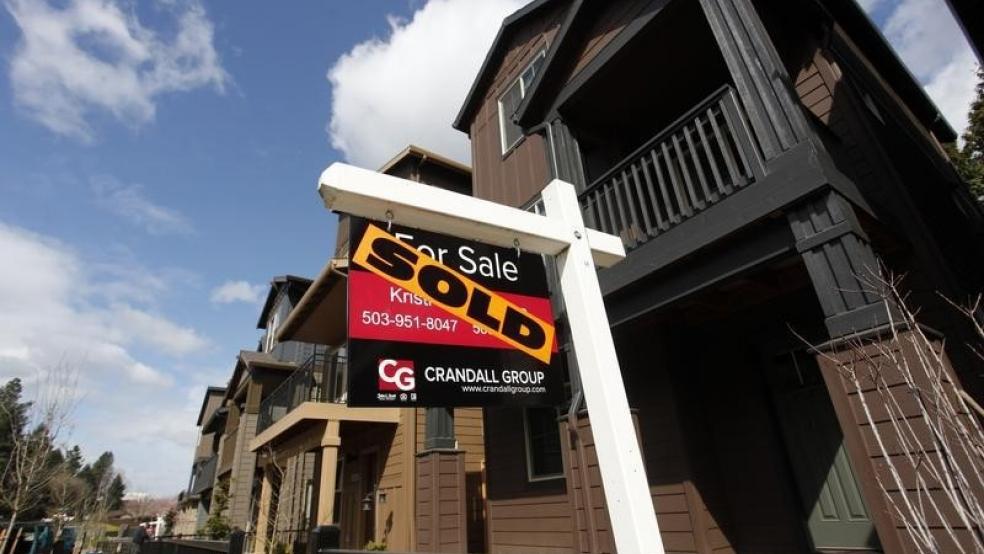One of the biggest concerns in housing right now is the lack of homes for sale. But the problem is disproportionately hurting one type of buyer: those looking for affordable homes.
The number of existing houses on the market at the end of February was 1.1 percent lower than a year ago. New home production has also been lagging. Only 715,000 single-family houses were started last year, well below the 1.025 million average since 1959.
The shortage is glaringly concentrated at the lower end, according to a new report from Trulia along with other data analyzed by The Fiscal Times. First-time homebuyers looking for starter homes and move-up buyers seeking affordable options are stuck with limited choices. The inactivity threatens to slow the housing recovery, because sales at the lower end propel transactions up the ladder.
Related: 12 States With the Hottest 2016 Housing Markets
"The lack of housing stock, particularly affordable inventory, is a growing issue,” said Anand Nallathambi, president and CEO of CoreLogic, in a statement last month, “and will limit a full housing recovery in the short to medium term."
Last year, the median price of a purchased home was $220,000 and its median size was 1,900 square feet. For first-time homebuyers, the figures were more humble at $170,000 and 1,620 square feet, according to a homebuyer profile report from the National Association of Realtors.
Those are modest, attainable homes, the kind of which are in short supply even though half of buyers last year sought them out.
In January, the decline in existing-home inventory only appeared in the two lowest price segments. The number of for-sale homes above $250,000 actually increased, with the volume of homes above $750,000 experiencing double-digit gains, according to data given to The Fiscal Times by the NAR.
A Trulia study released Monday showed similar results. Since 2012, the number of starter homes for sale dropped by 43.6 percent, while the number of trade-up homes fell by 41 percent. Premium home inventory also declined by a third, less than the other two categories, but its share of the overall market increased during that time.
Related: Prices Are Rising. Why Aren’t There More Homes For Sale?
Rising home prices are partly to blame, says Adam DeSanctis, an NAR spokesman, because what were lower-priced homes are appreciating into higher-priced categories. What’s left at the affordable end are scooped up quickly by motivated first-time homebuyers or cash-rich investors, whose share of the buyer market increased to the highest point since April 2014 last month. DeSanctis also noted that the number of foreclosures and short sales — once a source of lower-priced homes — is dropping.
Foreclosure inventory plunged by 21.7 percent in January and completed foreclosures fell by 16.2 percent compared with the previous year, according to CoreLogic.
Home builders are not filling in the gap, either. Using size as a proxy, since pricing data isn’t available, new homes built last year under 2,400 square feet made up 45 percent of all newly constructed homes. But the long-term average since 1999 is 57.5 percent, according to Census data.
Part of the reason why builders are shying away from affordable homes is the rising cost of land, labor and materials, says David Crowe, chief economist for the National Association of Home Builders. These increases make it harder for developers to justify the construction of smaller, less expensive homes. He also noted that only two out of 10 buyers of new homes are first-time homebuyers. Overwhelmingly, these buyers find their starter homes in the existing-home market.
Related: Here’s a Part of the Housing Market That’s Really Booming
“There is weaker demand,” he says. “The few first-time homebuyers that are in market for new homes are still bounded by credit issues, stricter underwriting standards they can’t meet and weaker income growth.”
Crowe says the solution remains with the existing-home market, so first-time homebuyers can buy homes from sellers who are ready to move up.
But first-time homebuyers have become a smaller part of the market. The share of these buyers fell to 30 percent in February, well below the historic average of 40 percent. They must pay 5.6 percent more of their income towards a home purchase than in 2012, according to Trulia’s findings.
“Finding the right property at an affordable price is burdening many potential buyers,” says ANR Chief Economist Lawrence Yun a statement Monday accompanying February’s disappointing home sales report.
Many move-up buyers are stuck in the same conundrum, unable to find an affordable home. Trulia found that trade-up homebuyers today have to shell out 2.6 percent more of their income for a home four years ago.
“The traditional domino effect of home buyers moving up to allow new entry buyers into the home owner market is simply out of whack,” says James Gaines, chief economist of the Real Estate Center at Texas A&M University. “It’s not clear what will need to happen to reverse this trend.”





